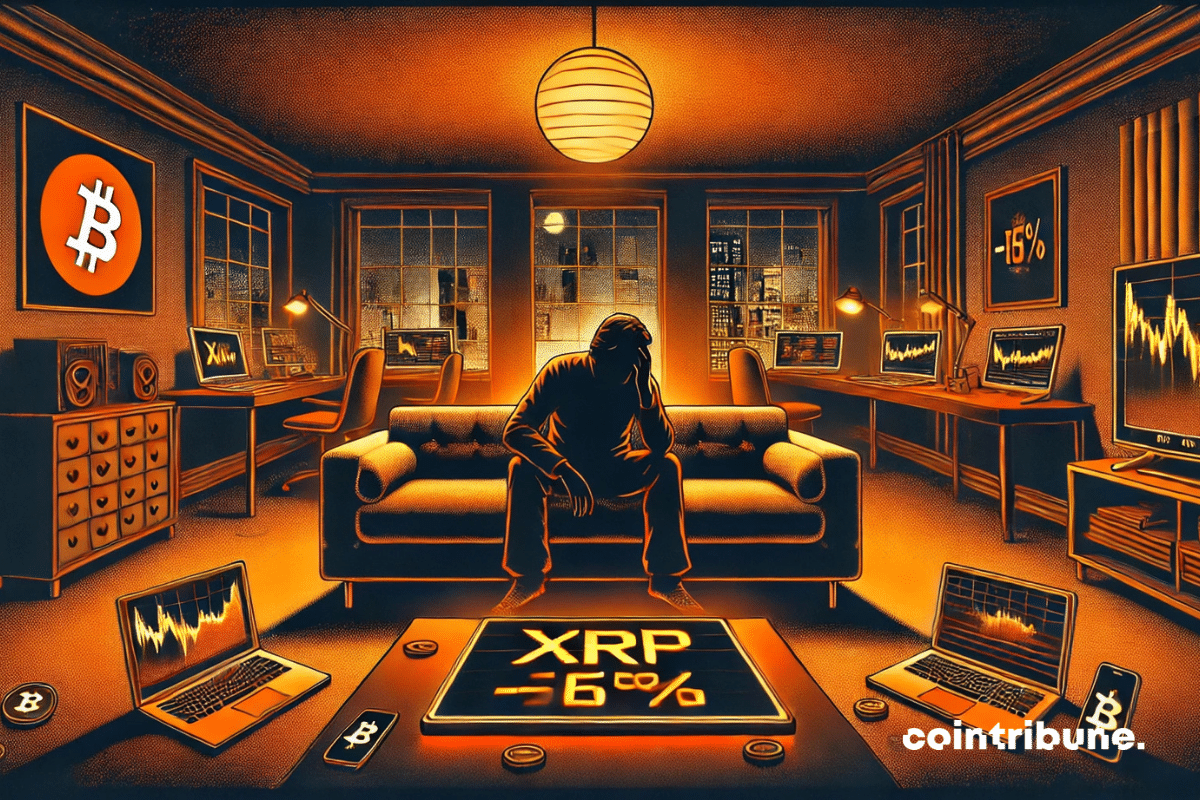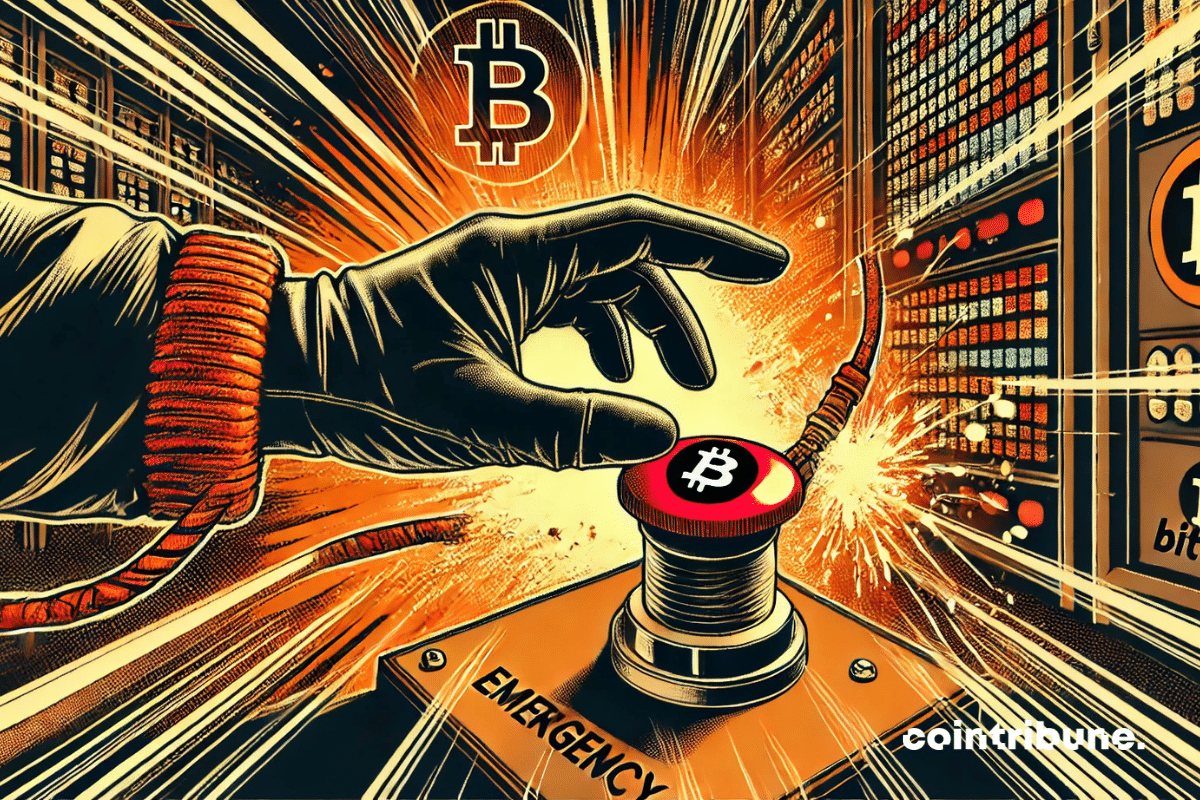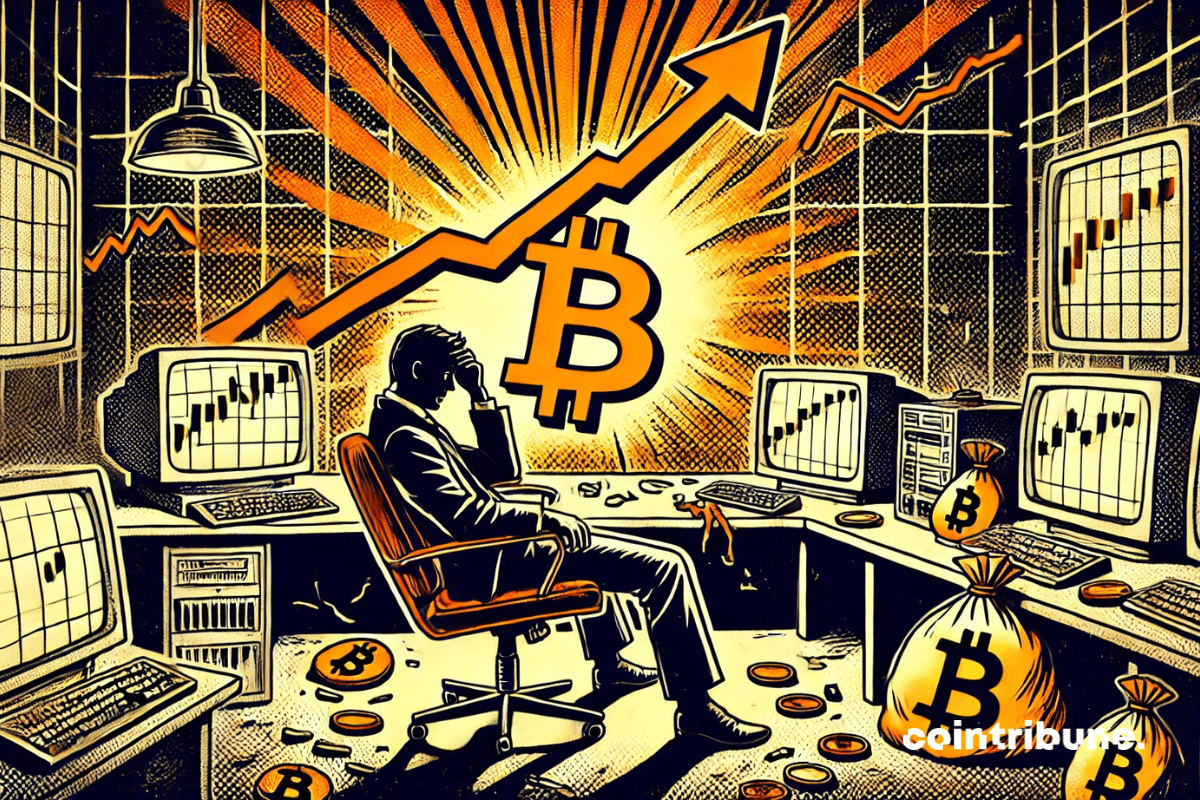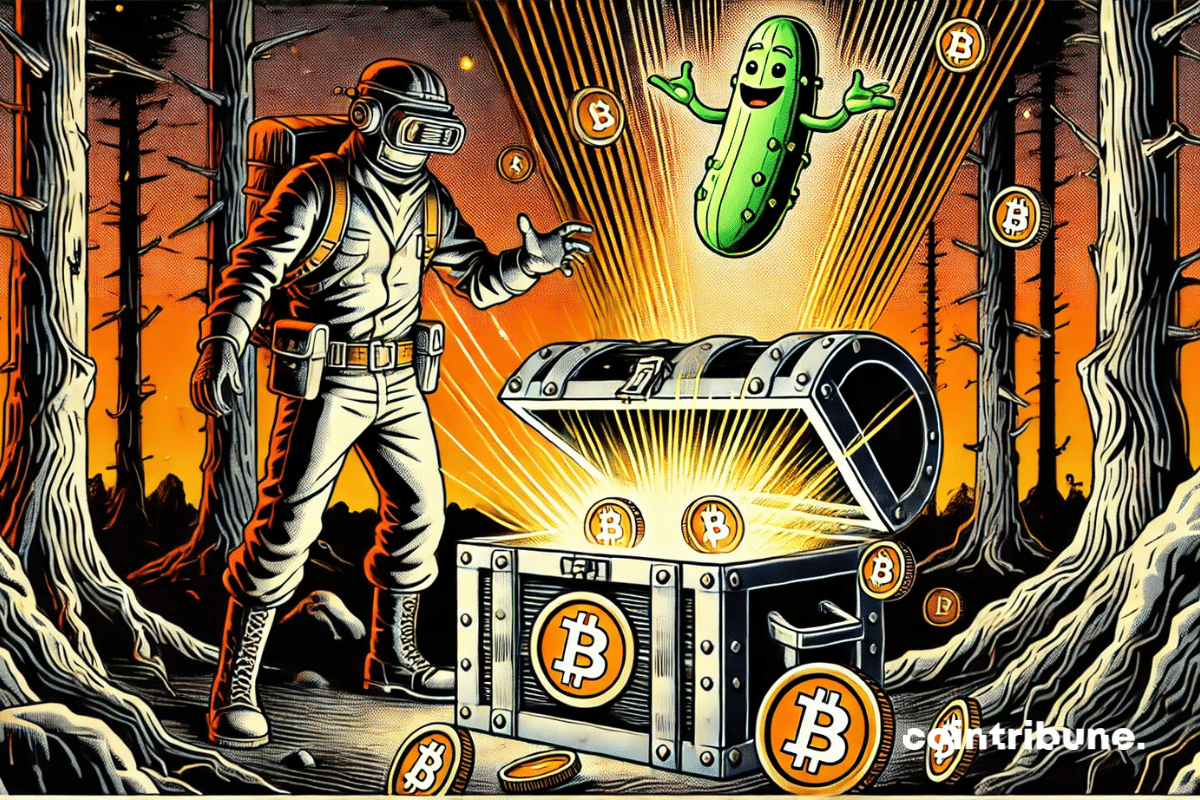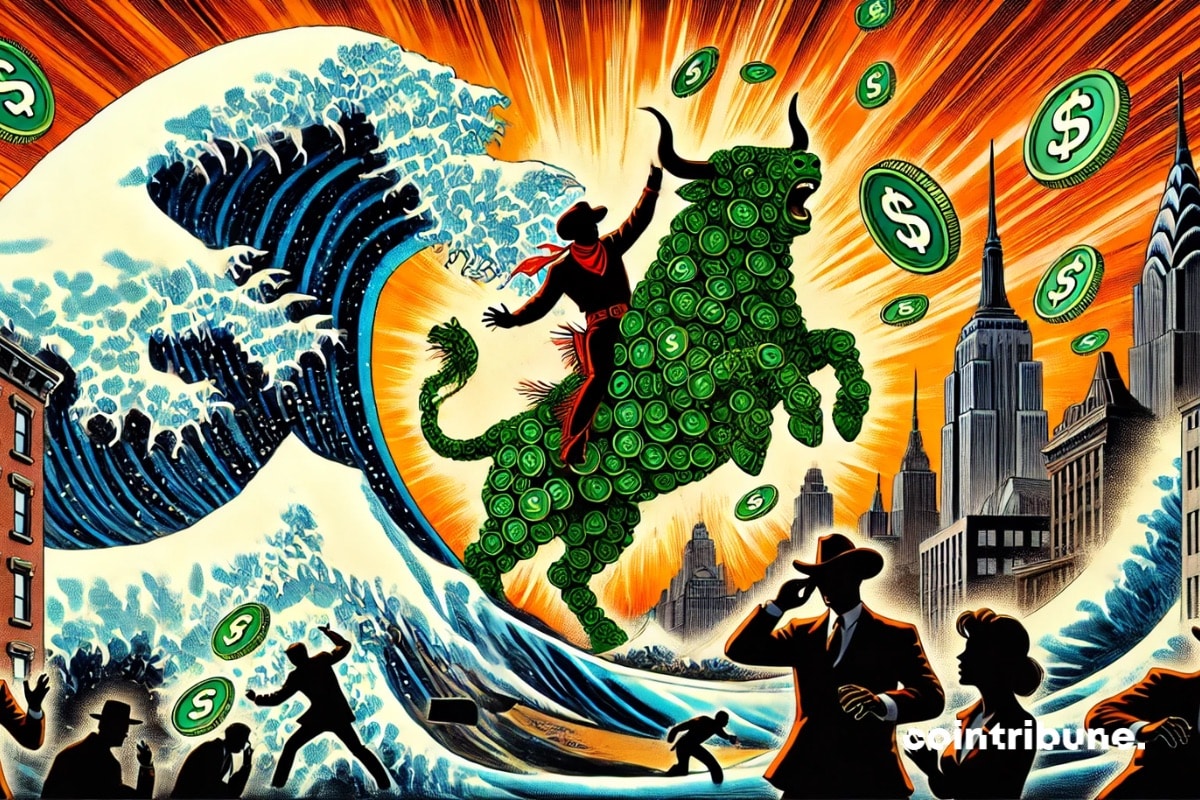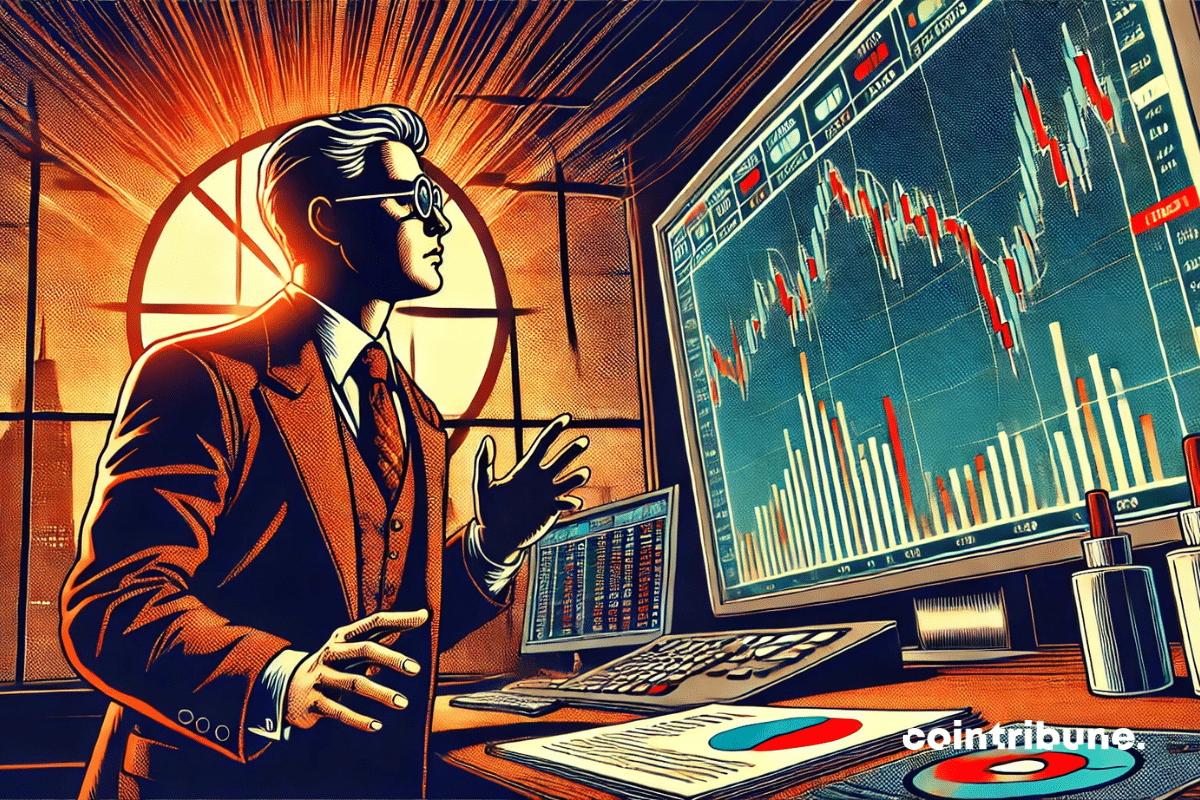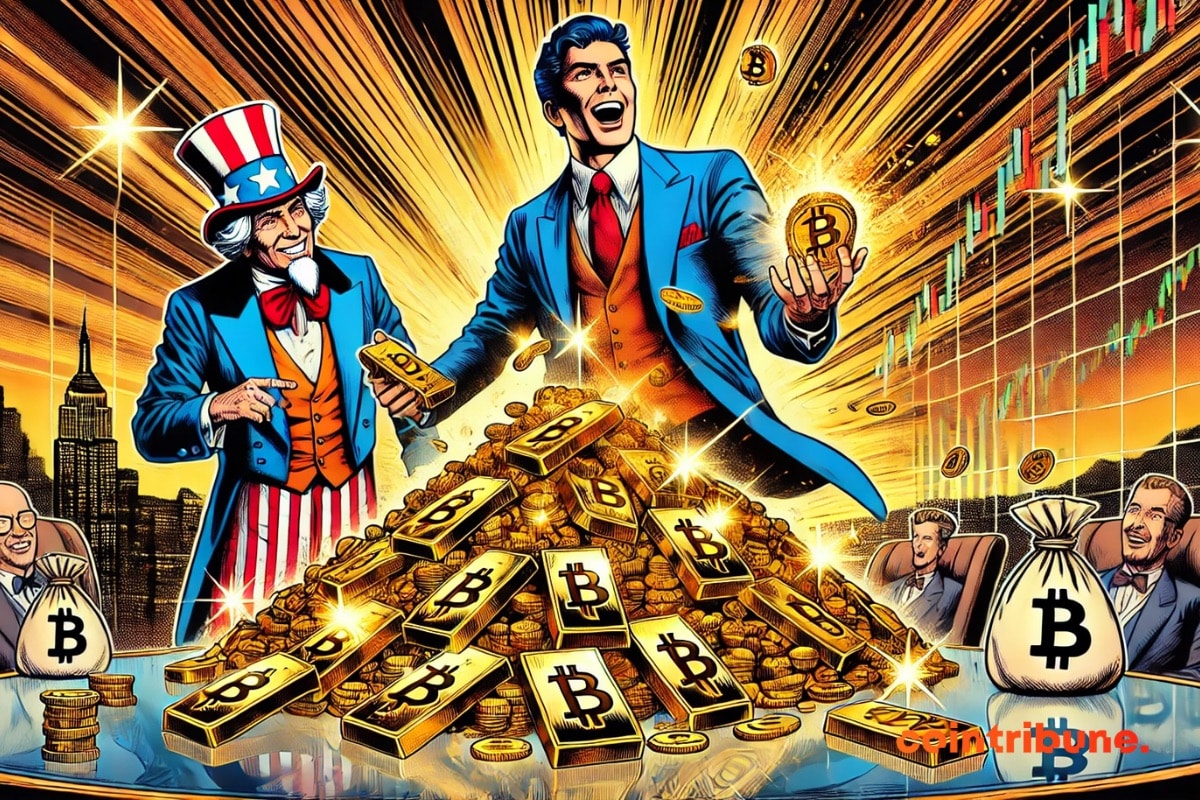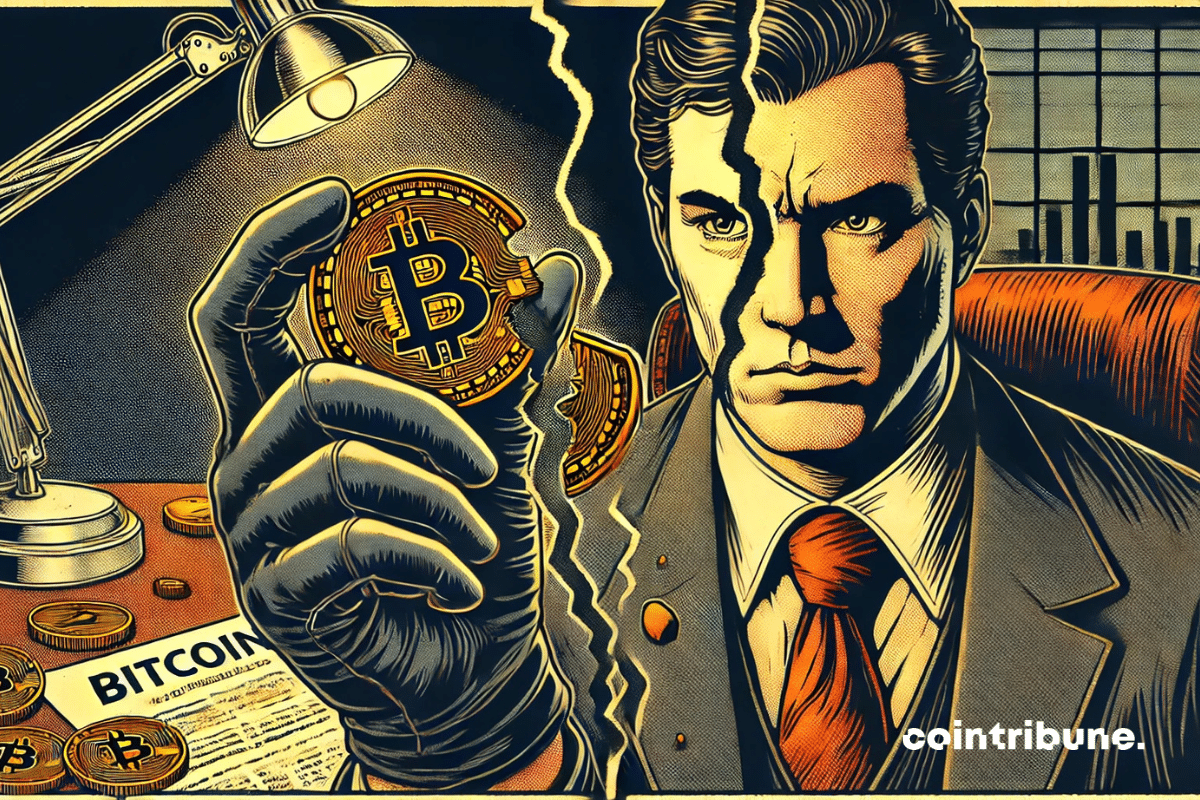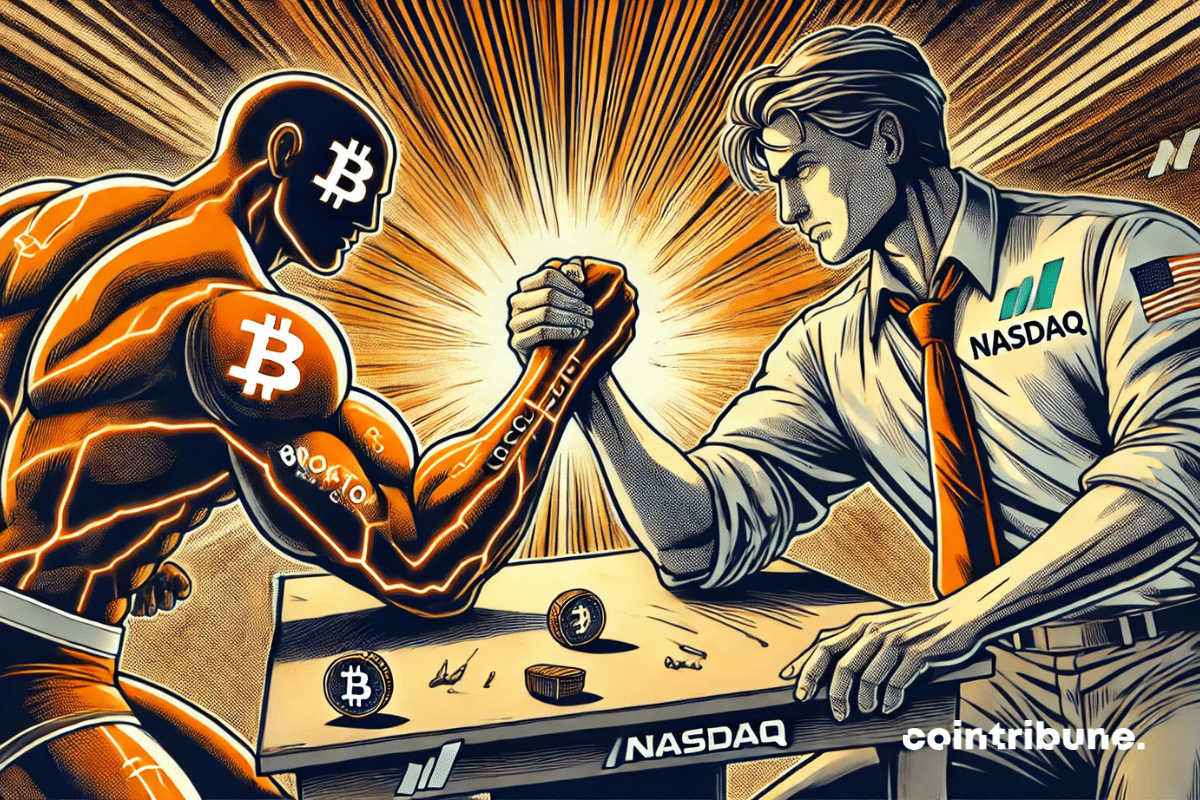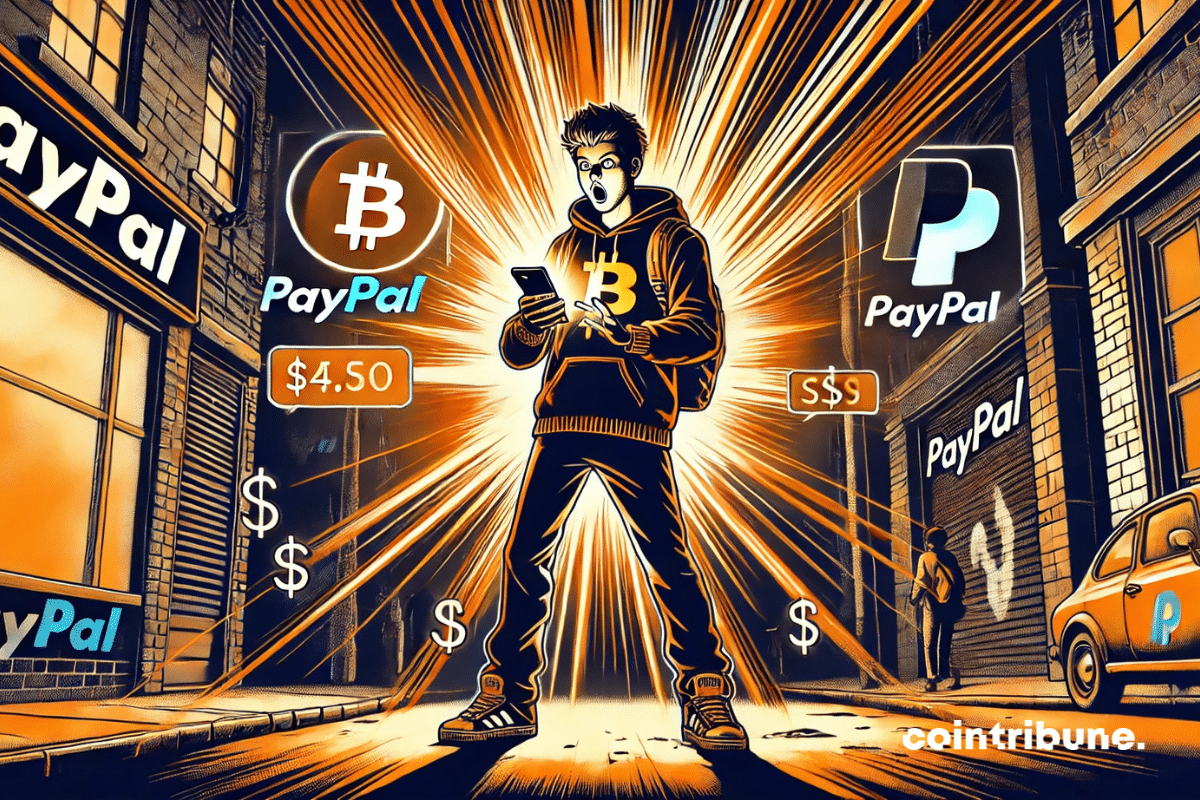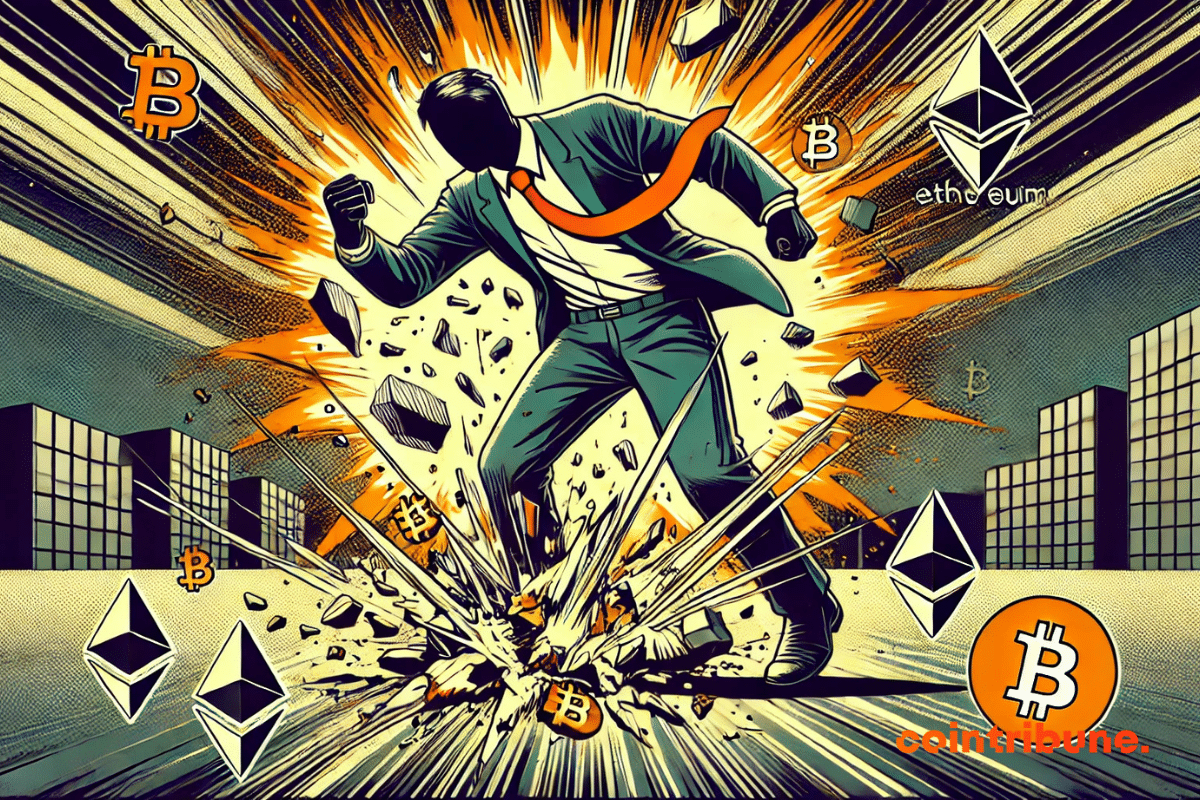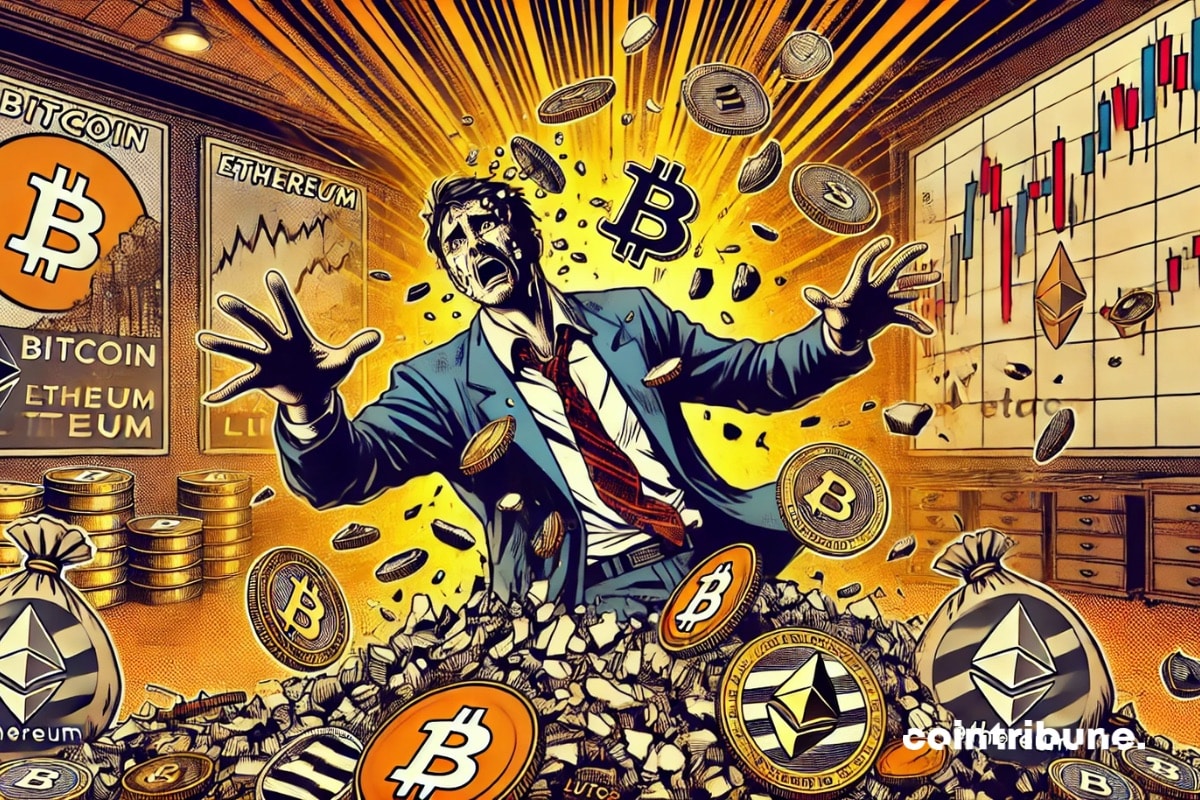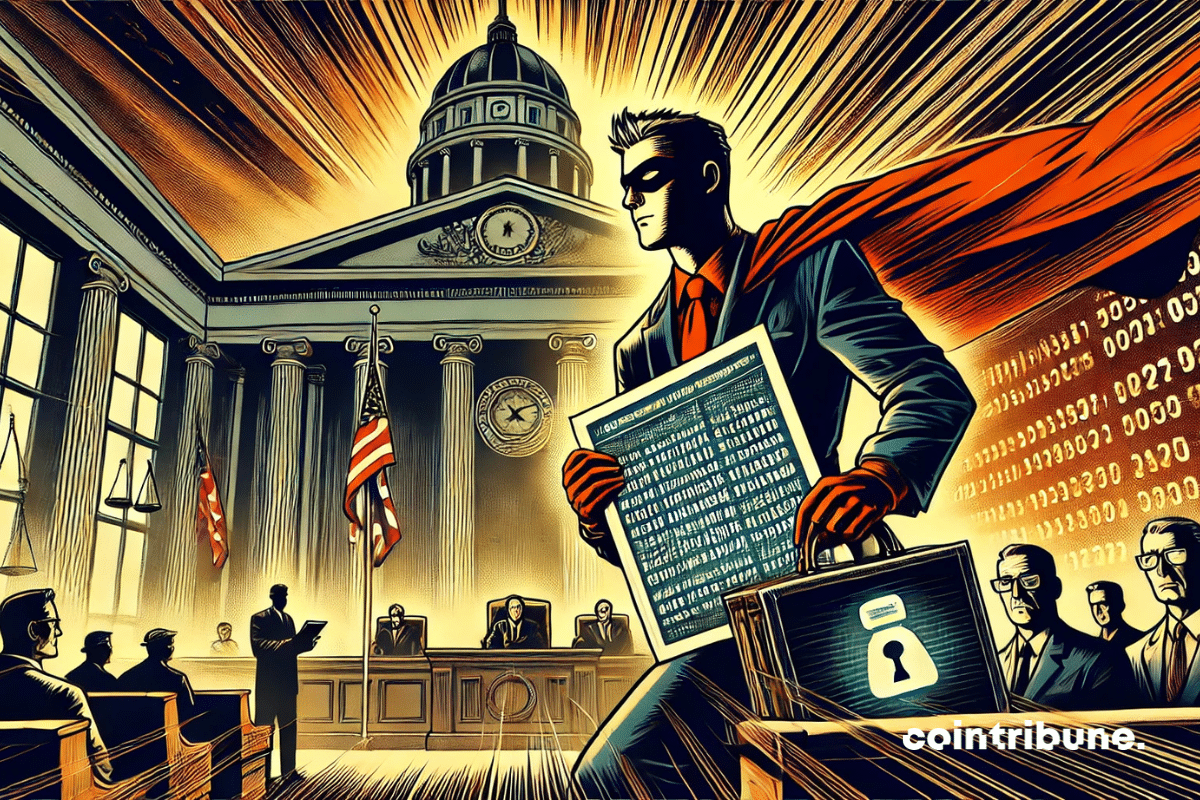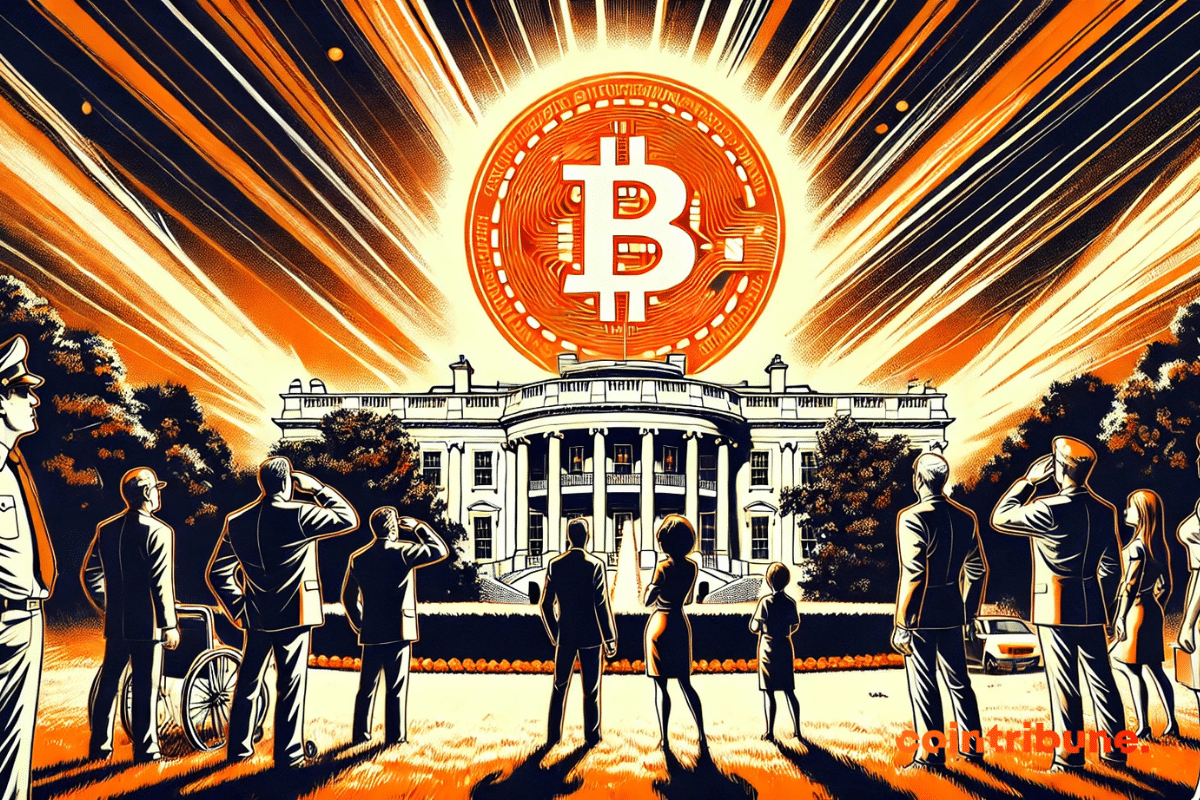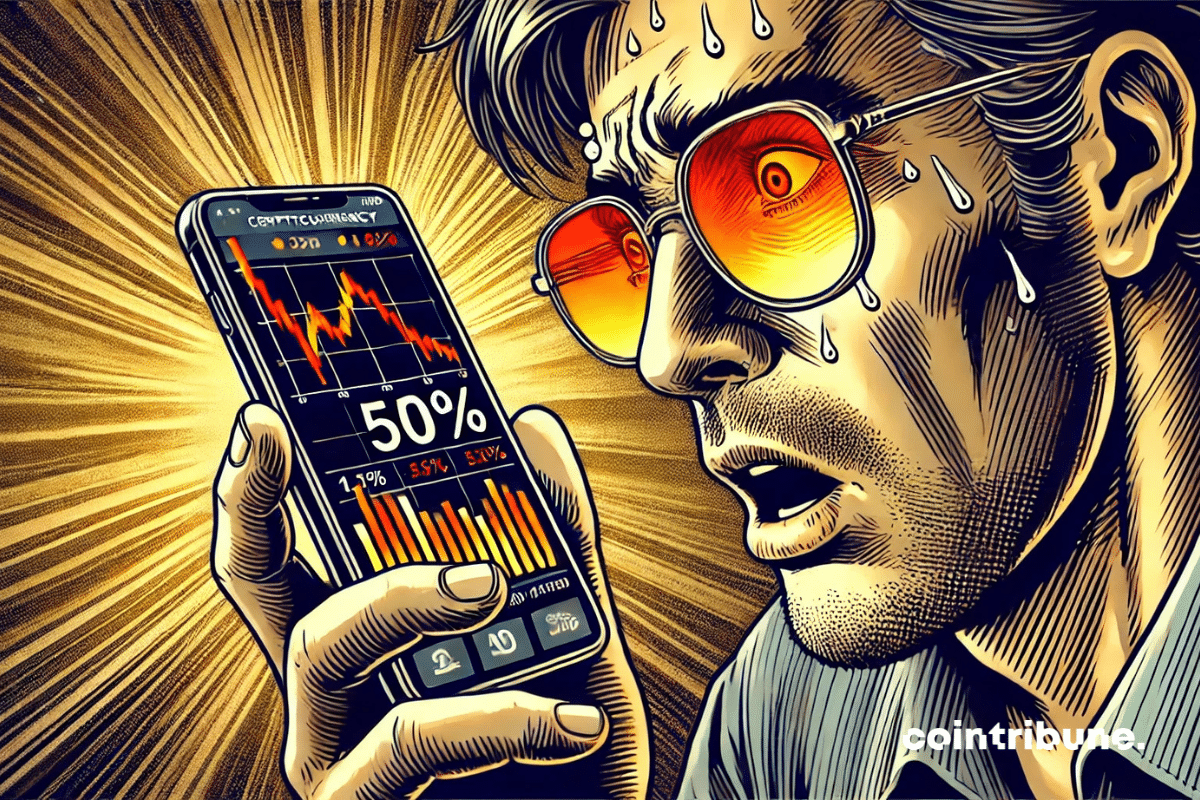The sudden calm that falls over a network as active as XRP is never trivial. After a stunning rally at the end of 2024, Ripple's blockchain is experiencing a plunge in its activity. This drop of 65% in just a few weeks is more than just a simple adjustment. It reveals a worrying loss of momentum and raises questions about the strength of the market. Behind the numbers, an entire speculative dynamic seems to be wavering.
Crypto News
Bitcoin may soon have to sacrifice some of its coins to survive the quantum era. In the face of the growing threat from quantum computers, a radical plan is on the table: to permanently burn thousands of bitcoins. This controversial project, called QRAMP ("Quantum-Resistant Address Migration Protocol"), proposes a hard fork to secure the network at the cost of a partial destruction of non-migrated BTC. The Bitcoin community must now choose between immediate security and absolute adherence to the original principles of cryptocurrency.
The sentiment for bitcoin is at its lowest since the beginning of 2023. However, several analysts are identifying encouraging signs of a possible change in momentum as the queen of cryptos shows remarkable resilience in the face of recent volatility in the US stock markets.
The famous video game franchise Fortnite has just integrated a replica of a Bitcoin mining farm into its latest update. This provocative reference has propelled the game-inspired memecoin "Dill Bits" to over 200%. A crypto nod that resonates beyond the virtual.
In an uncertain macroeconomic context, a clear trend is emerging: stablecoins are entering an independent bull market, according to the asset manager VanEck in its April 2025 report. While smart contract platforms like Solana and Ethereum are experiencing a significant slowdown, stablecoins are rapidly gaining ground in the crypto ecosystem.
The crypto market may soon experience a major new phase with the impending approval of Solana ETFs. For several years, investors have been seeking to diversify their crypto portfolios through regulated financial products. The introduction of ETFs based on assets like Bitcoin and Ethereum has already shown increasing interest. Today, Solana may well follow this trend.
As waves of economic uncertainty overwhelm the markets, the crypto universe holds its breath. Circle, the stablecoin giant, wavers between ambition and caution. Its IPO project, though firmly anchored, could sink into the murky waters of Trumpian policies. A decision that speaks volumes about the storms to come.
Four consecutive red months for ETH. A slow, silent hemorrhage, where each absent transaction digs a little deeper into the grave of an asset in search of a second wind.
According to a recent report by Binance Research, Bitcoin could undergo a major transformation, evolving from a mere store of value to a true productive asset. This shift is driven by the rapid expansion of decentralized finance based on Bitcoin (BTCFi), whose total value locked has surged by over 2,700% in one year.
Arthur Hayes, co-founder of Bitmex and a prominent figure in the crypto ecosystem, recently expressed his support for tariff policies as a lever to strengthen assets such as Bitcoin and Gold. In an uncertain global context, marked by economic and geopolitical tensions, Hayes believes that these assets can serve as shields against inflation and market volatility.
The year 2025 starts on a contrasting note for the crypto industry. While DeFi protocols suffer from a marked decline in their total value locked (TVL), decentralized applications, especially those focused on artificial intelligence (AI) and social networks, show solid growth. What are the drivers of these opposing dynamics and what prospects lie ahead for the ecosystem in the coming months?
While Bitcoin has retreated by 25% from its all-time high of over $109,000, an unexpected movement is emerging: whales are returning to their purchases. These large wallets, often seen as market barometers, are marking their first real return to accumulation since August 2024, according to Glassnode. In a context dominated by distribution and a sentiment reminiscent of the lows of 2022, this strategic signal could disturb the prevailing bearish consensus and reignite investor attention on current levels.
Is Bitcoin losing its status as "digital gold"? JPMorgan reveals a massive shift toward gold. Details here!
Centralized crypto exchanges display spectacular returns, significantly outpacing traditional stock markets. According to CoinMarketCap, these platforms offer highly lucrative opportunities despite the controversies surrounding their listing processes.
What if one of the largest banking groups bet on an outsider rather than the king of the market? In a report that shakes up certainties, Standard Chartered identifies Avalanche (AVAX) as the token to watch by 2029, with an expected performance surpassing that of bitcoin. This bold bet from a major financial institution illustrates a new interpretation of the crypto landscape, where modular and business-oriented blockchains are overtaking the historical giants. A strong signal that could redefine upcoming investment strategies.
PayPal is accelerating into the crypto space by directly integrating Solana (SOL) and Chainlink (LINK) into its wallet. This new feature is currently reserved for American users and associated territories. More than just a technical update, this decision is a significant boost for the massive adoption of cryptocurrencies. The intermediary MoonPay is no longer needed, making the experience seamless: buying, selling, and transferring these tokens becomes as simple as a few clicks. But behind this novelty lie much broader stakes. Here’s what you need to know.
A simple political speech can sometimes shake the entire crypto market. This Tuesday, an announcement by Donald Trump about new tariff increases triggered a wave of liquidations exceeding 500 million dollars. Bitcoin, Ethereum, and Solana plunged within a few hours, revealing the market's fragility in the face of geopolitical tensions. While leveraged traders were racking up losses, some institutions quietly took the opportunity to strengthen their positions.
As Bitcoin (BTC) remains above $81,000, signals of a shift in dynamics are multiplying. Recent data suggests a transition towards an accumulation phase, marked by a decline in spot sales and negative funding rates on trading platforms. This technical context, often a precursor to a bullish reversal, could well signal a forthcoming impulsive move.
In a context where crypto is infiltrating the corridors of power, an accusation shakes Washington. Representative Maxine Waters, a key figure of the Financial Services Committee, accuses Donald Trump of manipulating the legislative chessboard to impose his own crypto interests. Behind the semblance of a technical debate on stablecoins lies a much more troubling battle: that of a president seeking to replace the dollar with a digital currency bearing his likeness.
Why has debt become uncontrollable and how will Bitcoin benefit from it?
Launched as a promise of crypto democratization via mobile, Pi Network is now facing its biggest turbulence zone. As its Pi token dangerously approaches its historical lows, over 126.6 million new tokens are set to be released in April. This adds extra pressure on an already fragile asset, despite a massive community and stated ambitions. In an increasingly ruthless market, the illusion of success is no longer enough: the Pi ecosystem is wavering, and doubts are settling in.
March 2025 marks a significant turning point in the DeFi ecosystem: Ethereum regains the lead in the rankings of blockchains in terms of trading volume on DEXs, surpassing Solana for the first time since September 2024. A turnaround that occurs in a pressured market, with a notable decline in activity on Solana, particularly on its flagship platforms.
The crypto market is heading straight towards an impending cataclysm: a staggering crash of assets with a bewildering 70% probability! This, fueled by chaotic global economic factors and the ruthless tariffs imposed by Trump. Investors are increasingly worried, but a fragile hope remains, the only thing capable of stopping this descent into hell.
Is the flagship crypto preparing to explode? Discover the bold predictions of expert Arthur Hayes on Bitcoin in 2025!
Finance is undergoing a silent yet brutal metamorphosis. Bitcoin, born from the shadows of the 2008 crisis, today embodies a revolution that shakes the foundations of banks. Between promises of emancipation and technical challenges, its rise raises the question: can it really dethrone the giants of traditional finance? Far from clichés, let us dive into an unflinching analysis.
Elon Musk, via his platform X, has filed a brief with the U.S. Supreme Court to challenge the IRS's practices regarding access to Coinbase user data. This move falls within a broader debate on privacy protection in the crypto space.
As Donald Trump prepares to announce new tariffs on "Liberation Day," investors are questioning the impact of these protectionist measures on cryptocurrencies. Contrary to initial fears, several financial analysts believe that these tariffs could, in the long run, strengthen Bitcoin's position as an alternative safe haven.
Once again, GameStop defies expectations. Known for its stock surges and status, the video game retailer makes a new move by raising $1.5 billion through a convertible debt issuance. The stated goal: to integrate bitcoin into its balance sheet. A bold shift for a company in search of rebirth, amid a turbulent legacy and crypto ambitions.
As the tariff war reignited by Washington captures attention, Bitcoin hovers around $85,000. Some see a cause-and-effect link. However, this quick reading overlooks the essential: it is not geopolitics that is holding back the market, but the lack of concrete catalysts and a silent redistribution of flows towards safer assets. To understand this inertia, one must go beyond this analysis and follow the true signals of the market.
The crypto market under pressure: altcoins lose up to 50% in a few minutes. Discover the reasons for this brutal crash!
